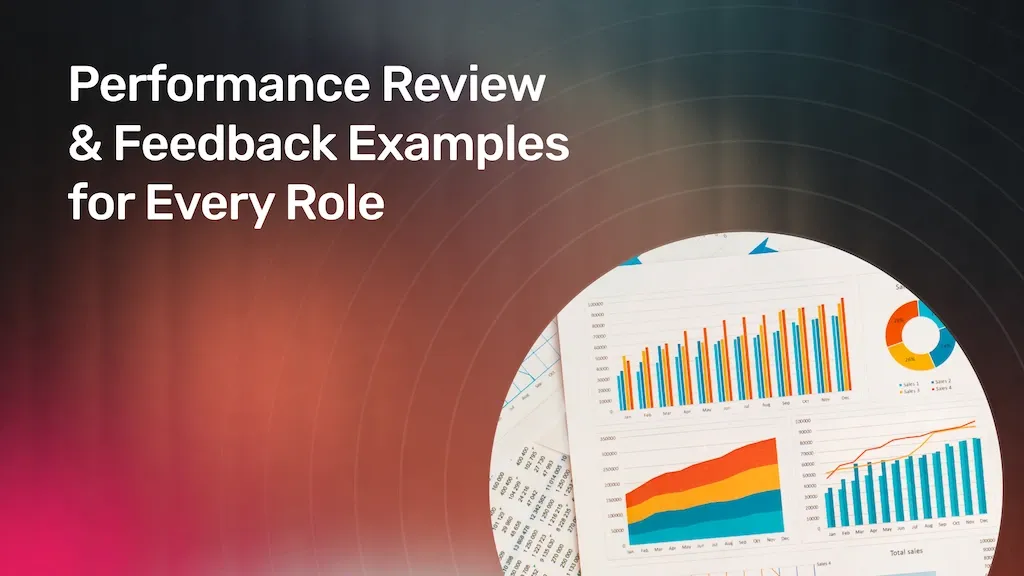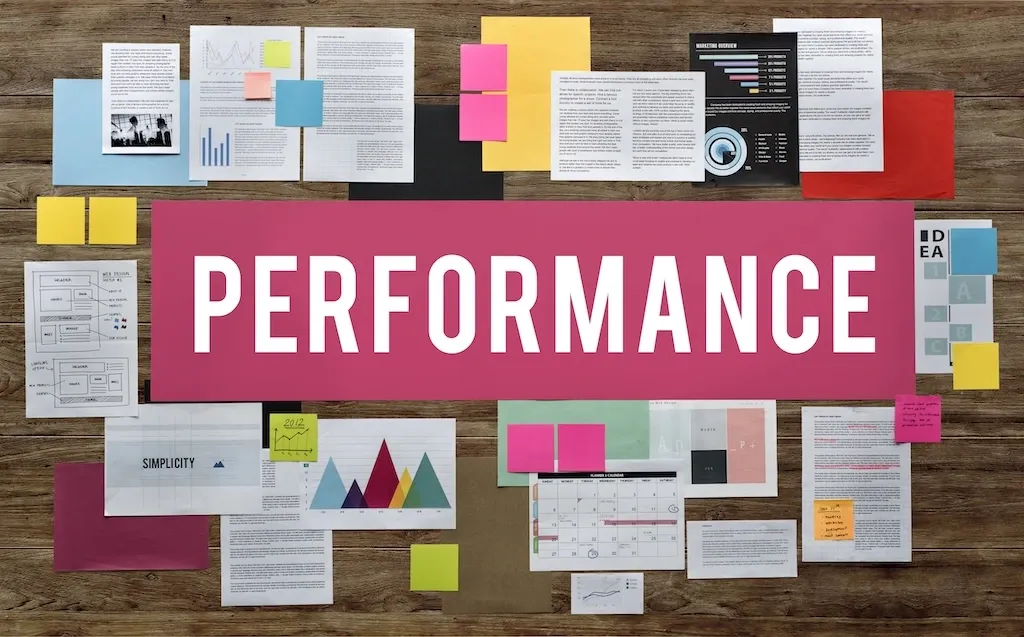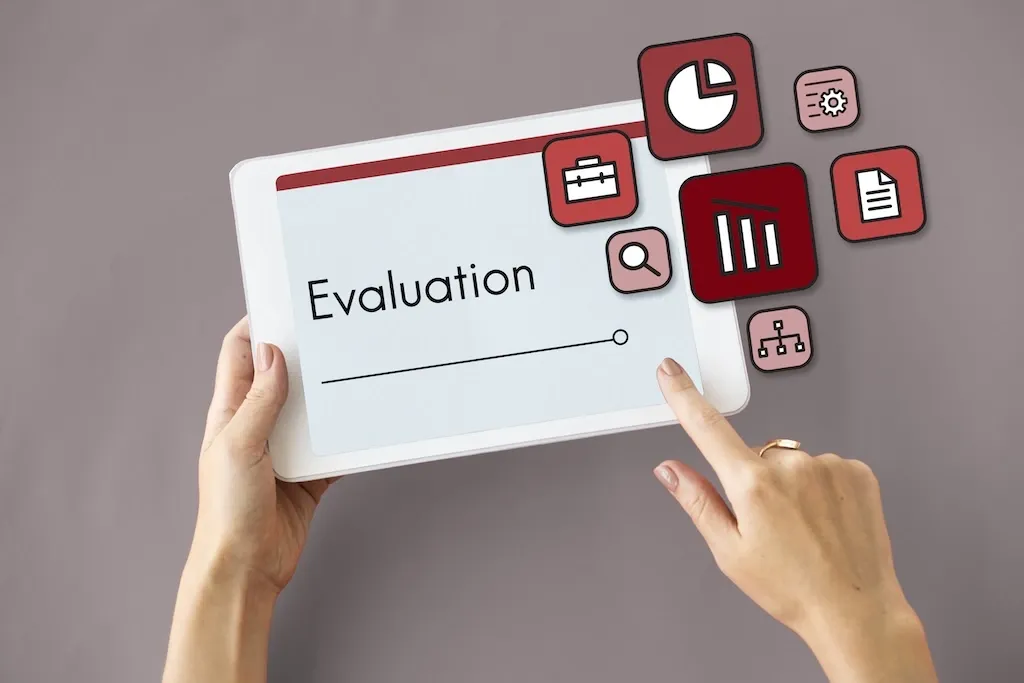30 Performance Review & Feedback Examples for Every Role
Performance reviews don’t have to be awkward or time-consuming. When done right, they’re powerful tools to drive alignment, strengthen relationships, and motivate teams. In this guide, we’ve gathered 30 real-world performance review and feedback examples tailored to different roles—whether you’re managing individual contributors, remote employees, or leading a sales team.

Key Takeaways
- Tailor feedback to the specific role and performance context.
- Combine praise and constructive advice to encourage balanced growth.
- Use clear, actionable language to make feedback effective.
- Schedule reviews regularly and encourage two-way conversations.
What is a performance review?
A performance review is a formal evaluation process where a manager assesses an employee's work performance, provides feedback, and discusses future goals. Typically conducted annually or semiannually, these reviews help clarify expectations, celebrate achievements, and identify areas for improvement and growth. They can also influence decisions on promotions, raises, and professional development.
Why performance reviews matter
Performance reviews play a crucial role in team success and organisational health. They promote transparency, offer opportunities for recognition, and facilitate alignment between individual contributions and broader business objectives. For businesses operating globally or managing remote teams, regular performance reviews also help maintain connection, motivation, and accountability.

How to give effective feedback
Delivering feedback effectively ensures that employees feel supported, understood, and empowered to grow and develop. Whether offering praise or constructive guidance, feedback should always be specific, actionable, and respectful.
Here are some proven tips:
- Use the SBI method: Situation, Behaviour, Impact
- Balance positives and growth points: Recognise achievements and suggest improvements
- Keep it timely: Don’t wait for annual reviews to address key issues or wins
- Encourage dialogue: Create space for employees to share their perspective
Performance review examples by role
Different roles require different types of feedback. Below, we’ve broken down feedback examples by common job functions to help you tailor your reviews more effectively.
Feedback for individual contributors
Positive feedback
- "Your attention to detail on the last client report helped us avoid key errors and made us look professional."
- "You consistently meet deadlines, which supports team productivity."
- "Your willingness to help others improves our team dynamics."
Constructive feedback
- "I’d like to see more proactive communication when deadlines shift."
- "Let’s work on time management to ensure tasks are completed more efficiently."
- "Try to ask more questions during project briefings to clarify expectations."
Feedback for managers
Positive feedback
- "You’ve built a strong, motivated team that consistently hits targets."
- "Your transparent communication style has built trust across departments."
- "You handle team conflicts with fairness and empathy."
Constructive feedback
- "It would help if you delegated more to give others leadership opportunities."
- "Let's focus on providing more regular one-on-one check-ins."
- "Be mindful of offering public praise to all team members equally."
Feedback for remote employees
Positive feedback
- "You’ve done a great job staying engaged and responsive despite the time difference."
- "Your documentation and updates make collaboration seamless."
- "You show strong accountability in completing work autonomously."
Constructive feedback
- "We’d like to see more active participation during virtual meetings."
- "Please update project boards more consistently so everyone stays informed."
- "Let’s work on improving clarity in written communication."
Feedback for sales and client-facing roles
Positive feedback
- "You exceeded your sales quota by 15% and built excellent rapport with clients."
- "Your ability to handle objections professionally sets a high standard."
- "Clients have given positive feedback about your responsiveness."
Constructive feedback
- "Try to tailor your pitch more closely to each client’s needs."
- "Let’s work on following up more promptly after client meetings."
- "You could improve documentation in the CRM system for better team visibility."
Feedback for tech and product teams
Positive feedback
- "Your code is clean, well-documented, and easy to build on."
- "You were instrumental in solving that critical bug before launch."
- "You’re proactive about suggesting new features and improvements."
Constructive feedback
- "Let’s focus on testing more thoroughly before handover."
- "Try to involve product managers earlier in the decision process."
- "Work on prioritising tasks to better align with sprint goals."

Performance review phrases by category
Using ready-to-go phrases can save time and help ensure consistency across the organisation. Here are some examples grouped by key categories.
Strengths
- "Consistently delivers high-quality work ahead of deadlines."
- "Demonstrates ownership and responsibility in every project."
Growth areas
- "Could benefit from additional mentoring in cross-functional leadership."
- "Needs improvement in balancing attention to detail with speed."
Soft skills
- "Shows strong emotional intelligence in handling feedback."
- "Effectively communicates ideas in both written and verbal formats."
Remote work
- "Maintains productivity and accountability without direct oversight."
- "Uses asynchronous tools effectively to collaborate across time zones."

Tips for making reviews more impactful
Want your performance reviews to truly make a difference? Here are several best practices to increase their value and impact:
- Prepare in advance: Review goals, recent projects, and feedback data
- Use data to support your points: Refer to KPIs or specific outcomes
- Set clear goals together: Co-create development plans and timelines
- Encourage open dialogue: Make it a two-way conversation
- Document the review: Share a written summary with key outcomes
Use Native Teams for managing your global team
Managing feedback, payroll, and performance across multiple countries? Native Teams makes it simple to hire, pay, and manage global talent—without the admin stress. From performance tracking to employment compliance, we help you build and support high-performing international teams.
👉 Learn more about Native Teams
Conclusion
Performance reviews are not just HR checkboxes. They are strategic tools that help leaders nurture talent, align goals, and build stronger teams. By using tailored examples and thoughtful feedback techniques, you can create a culture of growth and accountability.

Frequently Asked Questions (FAQ)
1. What’s the best way to structure a performance review?
Use a clear format: highlight achievements, discuss areas for improvement, and set future goals. Invite the employee to share their input.
2. How often should performance reviews happen?
Ideally, performance reviews should occur at least twice a year, with ongoing informal check-ins every quarter.
3. How do you handle remote performance reviews?
Conduct them via video calls, prepare talking points in advance, and follow up in writing. Ensure that you account for time zones and connectivity.
4. What tools can help with global performance management?
Platforms like Native Teams streamline global HR tasks, including payroll, compliance, and performance tracking.
5. What’s the difference between feedback and a performance review?
Feedback is continuous and informal. A performance review is a structured, formal evaluation that reflects on past performance and sets future expectations.
